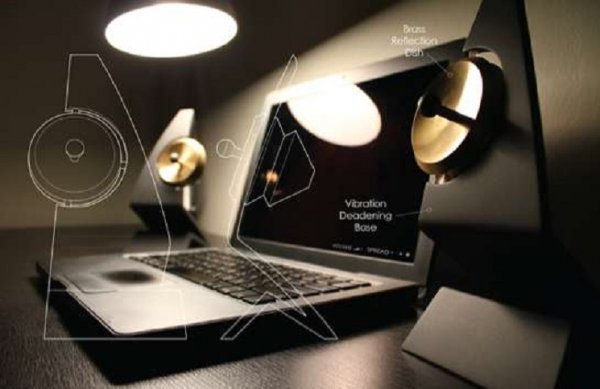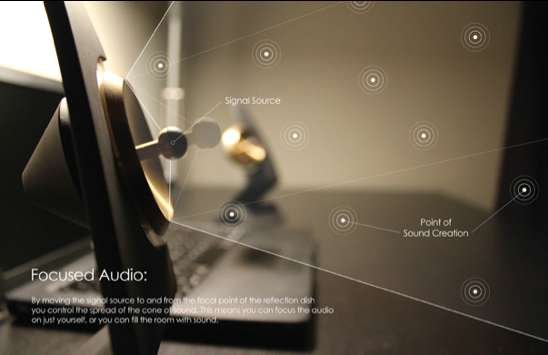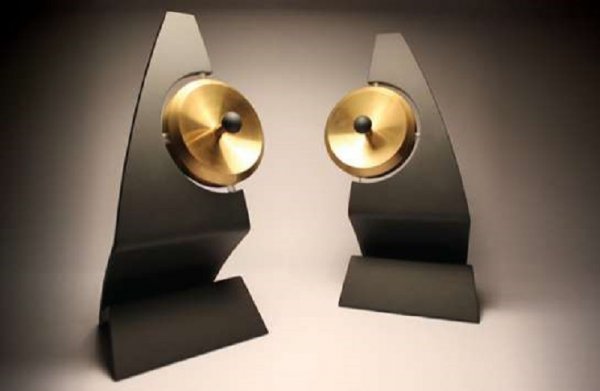[With omni speakers well away from the walls] you do get less of the "small room signature" but, although the signature is of a larger space, it is still colored by and conflated with the acoustic signature of the listening room. Moreover, that signature is applied to both the direct instrument sources as well as the ambient sources in the original performance. It may be more pleasing and "less wrong" but I would not call it a reasonable facsimile.
My experience has been that as you push the onrush of early reflections back in time, you start to hear a much greater difference in the spatial characteristics from one recording to the next. If the effect of increasing the path lengths was merely to make the room's signature "more pleasing", then we would not hear greater spatial variation from one recording to the next.
At Axpona 2016 one of your colleagues, Andew Quint, was in the room and I made my pitch for what I was doing (similar in principle to what you'd get with omnis pulled well away from the walls). He raised an eyebrow and replied, "I'd like to challenge that", and pulled out a thumb drive. It contained a recording made in a concert hall he was familiar with. When it was over, I asked Andrew how we did. He said, "It passed. It's not a gimmick, it works. I could clearly hear the Concertgebouw hall." He posted about it on
another forum , and in that post he wrote:
"I've heard music there, and there's truly a sense of sound being present in the air around you.
"The multichannel program on the RCO [Royal Concertgebouw Orchestra] Live SACDs (there are dozens) get this aspect right; so did [Duke's speakers],
nearly to the same degree, despite the presence of only two channels. My concern when Duke told me about the rear-firing drivers was that this would impart some generic, Bose-like spaciousness to the recording, but that wasn't the case—what I heard was the unique acoustic signature of the Concertgebouw." [Emphasis mine]
So at least one well-qualified person heard what was arguably a reasonable facsimile of a concert hall he's familiar with from a two-channel setup embracing the aforementioned ideas. And this was in a normal-sized hotel room with ZERO acoustic treatments.
I've been involved with several custom recording studio builds and one goal is that the engineer be able to hear the spatial characteristics of the recording rather than the "small room signature" of the room he is working in. To this end the acoustician designs the room to minimize early reflections. The acoustician I work with, Jeff Hedback, and I get way down in the weeds on matching up the radiation pattern of the speakers with the room dimensions and angles and the engineer's position at the console. I have been in one of his completed rooms and it sure sounded to me like we were hearing spatial characteristics which totally defied the visual cues of the room we were sitting in.
I realize it's highly counter-intuitive to think that the ear could pick out the recording venue's reflections which had been subjected to the listening room's reflections, and I am not sure of the exact psychoacoustic mechanisms involved, but in a nutshell here is what I think is going on: The ear/brain system tries to figure out what the "best fit" is for all of the spatial information coming in, which includes original venue cues and listening room cues. A fairly long initial time delay before the strong onset of reflections weakens the listening room cues and can enable the recording venue cues to dominate our perception.
Further anecdotal evidence of this effect comes from the multitude of dipole speaker owners who hear "more of the recording" and "less of the room" when they pull their speakers five or six feet (or more) out into the room.
A "reasonable facsimile" is what one gets with good multichannel which, let's be clear, is not an accurate and totally convincing recreation of the original event unless one is willing to go to fully "immersive" media. Of course, that way lies madness as well as a paucity of music recordings.
I'm not claiming that two-channel truly rivals good multichannel at its own game, which is creating an immersive experience. I do claim that, with the right choices and a suitable room (untreated hotel rooms theoretically included), two-channel can do a pretty good job of immersion, and I'll also claim that two-channel offers more good recordings to choose from.
Kal, something I have not kept up with is, processors which derive multi-channel sound from a two-channel recording. How do those fit in?










